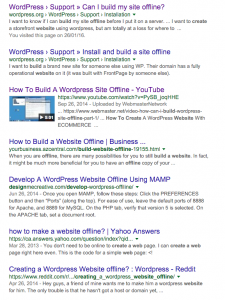Medical education is still in its infancy when it comes to use of mobile devices in the classroom. There’s no rule against the use of mobile technologies, but I can’t say that it is promoted either. Students are free to bring whatever device they see fit for their learning. I’ve seen many iPads and other tablets as well as smartphones. Some lecturers use polling through smartphone but its few and far between. In the hospital, point of care apps, medication apps, and pregnancy wheel apps are often used. Some apps are provided for free to students and residents through our library. However, these are not usually used for direct teaching purposes. It’s more for self directed learning.
At this point I guess you could say that mobile technologies are usually used to access reference materials. But could they be used for other purposes in medical education? Could it be used as a teaching device? Absolutely! We, as instructors are likely the greatest barrier to its implementation. It’s our lack of knowledge and experience regarding the use of mobile technology as a learning tool. If we were comfortable and knew that students would be more engaged and thus active in their learning, I think we would embrace it.
I don’t personally have a success story regarding the use of mobile devices in the classroom. But I know of a general surgeon at our university who started making podcasts for students and residents and these are used not only by our own students but students across the globe. Many access it with their mobile devices to help them learn during their rotation. Here’s a great article summarizing his work.
Mobile devices makes a big difference in accessibility. As mentioned by Ciampa (2013), being able to learn “anytime, anywhere” engages students, promotes self-directed and self-paced learning. I think they are a highly effective media if used correctly. The challenge is to use them in such a way that it incorporates the six aspects of successful learning systems; challenge, control, curiosity, recognition, cooperation, and competition (Ciampa, 2013). In the article, it appeared that they were using educational apps that were already developed. But what happens when you can’t find one that’s applicable? I don’t have the technical skill to make something like that nor do I have the time to learn. I would need a team to help me develop a course that uses mobile devices successfully. Does my university have the resources necessary for this? What will my time commitment be? Or is there something that’s already developed that I don’t know about? I don’t have the answers to these questions but as I make my way through this program and my career progresses as I take on more teaching responsibilities at my University, I am confident I will find them along the way.
Reference

